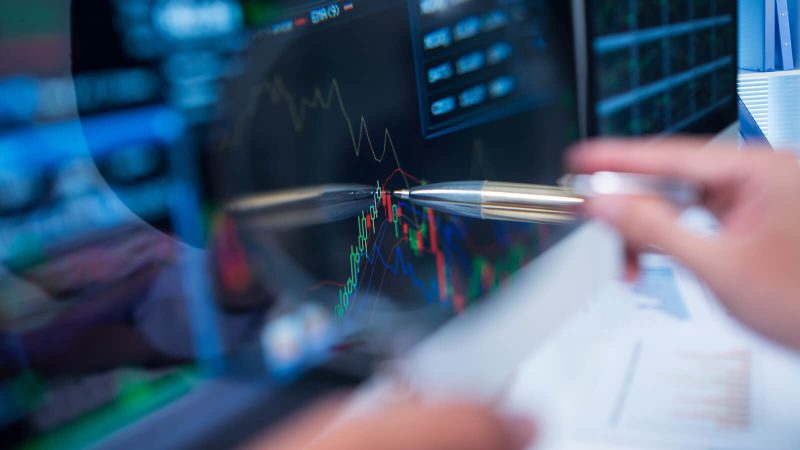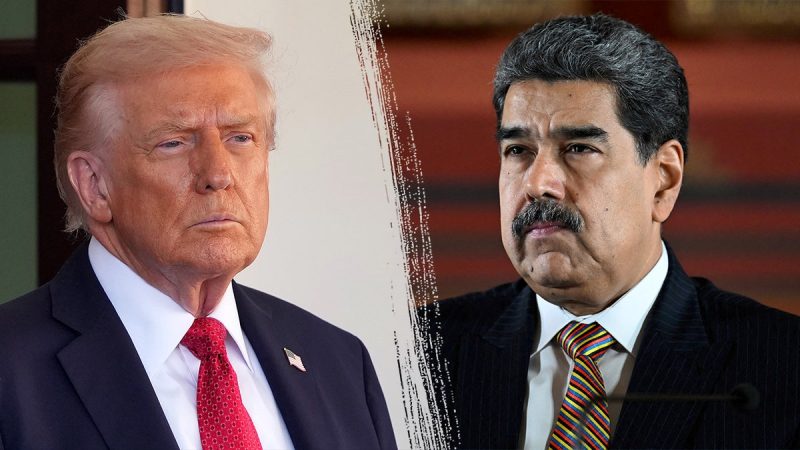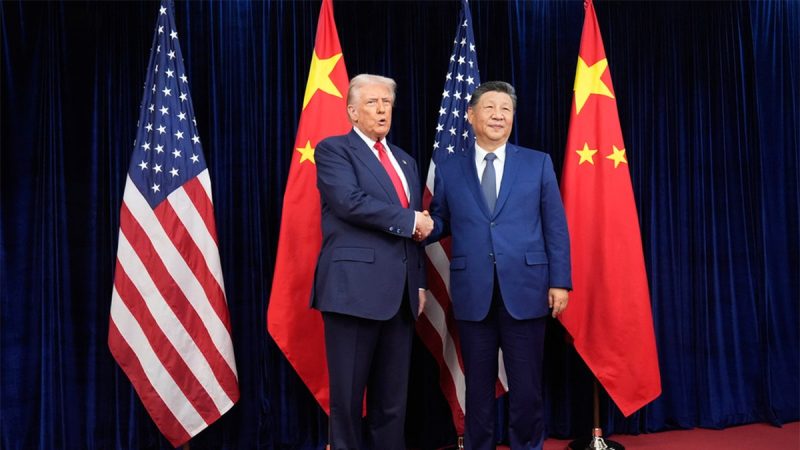Staggering revelations came out this week concerning Operation Arctic Frost, the Biden Justice Department’s weaponization campaign against Republicans predicated on the non-crime of objecting to a presidential election.
Democrats lodged similar objections in 1969, 2001, 2005 and, most infamously, in 2017 when they cited the discredited Steele Dossier to attempt to overturn President Trump’s victory. Yet, none faced charges. Objecting to electors is protected by the First Amendment and the Electoral Count Act of 1887. It was eminently reasonable for Members of Congress—the arbiters of whether to certify election results—to lodge inquiries about the fairness of the 2020 election.
There is no evidence that the Arctic Frost targets participated in any crimes that occurred at the Capitol riot on January 6, 2021. Still, Biden Attorney General Merrick Garland, Deputy Attorney General Lisa Monaco, former FBI Director Christopher Wray, and Special Counsel Jack Smith went on a fishing expedition targeting President Trump, his aides, the Republican Attorneys General Association, Members of both chambers of Congress, and many other Trump allies.
Thanks to the stellar leadership of FBI Director Kash Patel and Deputy Director Dan Bongino, Senate Judiciary Committee Chairman Chuck Grassley—an oversight bulldog for more than half a century—was able to deliver a powerful presentation to the media that detailed the horrific abuse of power by the Biden administration. For no valid reason, Jack Smith and his henchmen sought phone records for nine senators, all Republicans.
Even more alarmingly, Smith subpoenaed AT&T to tap the office line of Sen. Ted Cruz of Texas. AT&T declined to do so on the advice of counsel but could not disclose Smith’s astonishing request thanks to an order from radical D.C. Obama Judge James Boasberg. Boasberg preposterously asserted that disclosure could lead to evidence destruction and witness intimidation. As former top Senate attorney Michael Fragoso pointed out, Boasberg’s secret snooping likely violated a clear federal statute that requires disclosure to the Senate when spying on a senator.
Boasberg deserved impeachment even prior to this revelation based on his grossly irresponsible order to turn planes full of Tren de Aragua terrorists around while they were flying over the ocean, lawlessly exposing an ongoing military operation and endangering American and allied lives. The House more than ever needs to impeach this renegade judge.
People are understandably outraged at the Democrats’ weaponization of law enforcement, and many are upset that, in their view, not enough is being done. This sentiment ignores the reality of our legal system. Earlier this month, Miami U.S. Attorney Jason Reding Quiñones sought and obtained permission to empanel two new grand juries in January—including in Fort Pierce, Florida. It takes several months to prepare for a grand jury because prospective grand jurors need sufficient notice to respond to summonses. Anyone who has received a jury duty summons understands this process. Hopefully, this grand jury will investigate the unprecedented Mar-a-Lago raid as part of a broader probe into a conspiracy against the rights of President Trump, his aides, and his allies pursuant to 18 U.S.C. § 241.
Criminal charges also are time-consuming because defendants can delay the process. Former FBI Director James Comey and New York Attorney General Leticia James, for instance, have moved to dismiss their charges on the grounds of vindictive prosecution. They also claim that Lindsey Halligan, U.S. Attorney for the Eastern District of Virginia, is serving pursuant to a constitutionally invalid appointment. If the leftist judge rules in their favor, the government will appeal, but this is time-consuming, especially if the case reaches the Supreme Court. Jack Smith tried to rush President Trump’s D.C. criminal case to trial, attempting to bypass the D.C. Circuit during the appeal of the presidential immunity issue. The Supreme Court rightly rebuffed Smith’s politically-motivated effort, and Smith’s blatant attempt to rush provided plenty of ammunition for his critics. As one federal judge wisely summarized the right course of action in criminal cases, it is better to do it right than to do it twice.
Patel and Bongino are not sitting on the sidelines while the criminal process plays out under the superb leadership of Attorney General Pam Bondi and Deputy Attorney General Todd Blanche. Over ten ringleaders and more than five case agents involved in the Arctic Frost case have been fired so far. Many of these agents, such as Walter Giardina, are suing over their terminations. These suits will take time to play out, as will more firings.
Patel and Bongino have done far more than investigate weaponization. Congress had been demanding documents concerning the shooting that nearly killed House Majority Leader Steve Scalise and more than a dozen other lawmakers by a deranged Bernie Sanders supporter nearly a decade ago. Shortly after assuming office, Patel and Bongino delivered the documents. The FBI also has been at the forefront of drug seizures, taking enough fentanyl off the streets to kill 127 million innocent Americans. The government also has seized more than 190,000 kilos of cocaine and more than 8,000 kilos of methamphetamine. In addition, the Trump administration has taken more than 6,000 illegal weapons off of our streets. Violent crime arrests are up 100%, and gang arrests are up over 200%. Arrests of child predators are up 10%, and human trafficking arrests are up 15%. Four of the FBI’s Ten Most Wanted have been captured; no captures occurred in 2024.
Justice is coming for those responsible for the lawfare; Bondi, Blanche, Patel, and Bongino are working diligently to make it happen. They were the targets of the weaponization they are investigating; they have no reason to drag their feet in exposing it and holding its architects accountable. Patience is a virtue, and the coming justice for the individuals who engaged in Republic-ending lawfare surely will be worth the wait. We will make sure of it.


![When New York mayoral candidate Zohran Mamdani stepped to the microphone outside the Islamic Cultural Center of the Bronx last week near Yankee Stadium, his voice broke as he spoke about ‘the memory of my aunt who stopped taking the subway after Sept. 11 because she did not feel safe.’
Behind him, a Yemeni-American educator in sunglasses named Debbie Almontaser nodded. Almost two decades ago, in 2007, she was forced to resign as principal of a city school after defending a T-shirt with the slogan ‘Intifada NYC.’ City officials viewed it as a call to violence. She said it was benign. Her case became a rallying cry for Muslim American activists who cast her as a victim of ‘Islamophobia.’
Now, Almontaser was back, this time as a senior advisor to Emgage Action and a board member of Yemeni American Merchants Association Action, two of 110 political nonprofits, community groups and political action committees backing Mamdani as he alleges ‘islamophobia’ against him. Recently, when critics questioned Mamdani’s ties to hardline Brooklyn Imam Siraj Wahhaj, she sprang to action, helping to organize a protest to defend Wahhaj.
That rapid, coordinated response captured the modus operandi of a network of political operatives and clerics intertwined with the shared mission of catapulting Mamdani into the mayor’s office.
Mamdani’s background diverges from many of his co-religionists. In an interview, he said he is a Khoja Shia Muslim, part of a small, relatively liberal sect with roots in India. Many of his New York-area allies are religiously strict Sunni Muslims who practice more conservative interpretations of the faith. But they find common ground in politics.
‘It’s a sophisticated fusion of religion, politics and identity,’ said Mansour Al-Hadj, a Washington-based researcher on Muslim political movements and extremism. ‘The same networks that once focused on community services are now mobilizing voters and producing candidates. This is how political Islam adapts inside democracy.’
Mamdani’s God Squad includes about a few dozen key players who specialize in painting any critique as an attack on their faith, accusing critics of Islamophobia even as many of them have engaged in strident rhetoric against the U.S., Israel and capitalism.
Mamdani set off a firestorm on Oct. 7 when he walked into Masjid At-Taqwa in Brooklyn and later posted a photo of himself beaming beside the mosque’s imam, or prayer leader, Siraj Wahhaj.
The imam’s checkered past goes back decades. In a 1992 talk, he said American Muslims should elect an ’emir’ rather than choose between George Bush and Bill Clinton. Soon after, he served as a character witness in the trial of Sheikh Omar Abdel-Rahman, the so-called ‘Blind Sheikh’ convicted for plotting the 1993 World Trade Center bombing that killed six people.
‘You know what this country is?’ Wahhaj said in 1995. ‘It’s a garbage can. Filthy. Filthy and sick.’
In 2018, three of Wahhaj’s children were arrested after authorities found 11 malnourished children in a New Mexico compound tied to his family; a grandchild had died in what authorities described as an attempted exorcism. He told local news reporters, ‘Whatever they did wrong…it’s not acceptable to us.’
In New York, the Muslim American Society recently signed onto a letter to challenge ‘unmistakably Islamophobic, anti-Black, and xenophobic’ attacks on Mamdani. Signatories included CAIR National, the Council on American-Islamic Relations’ New York chapter, Islamic Circle of North America’s New York chapter, the Islamic Center of Five Towns, Muslim American Society of New York, Muslim Community Network, Rockaway Islamic Center, and a ‘Syosset Muslim Community.’
Members of the Muslim American Society have long been quick to accuse others of Islamophobia even as they unabashedly call for violence against their perceived enemies.
At an Eid celebration earlier this year, a cleric at the Muslim American Society, cast Muslims as victims worldwide. Mohammad Badawi, youth director at the Muslim American Society, declared the local community’s joy would only be complete when Muslims are ‘victorious worldwide,’ adding they would celebrate ‘after the destruction of the illegitimate Zionist occupiers,’ Israel.
He regularly organizes anti-Israel protests in a campaign against ‘injustice and oppression.’ At one protest, Badawi urged youth to ‘fight back’ against injustices ‘by any means necessary.’
<strong>The Street Protester: ‘Globalize the intifada’</strong>
Abdullah Akl, a charismatic organizer with the Muslim American Society Youth Center, leads many protests under the banner of ‘Within Our Lifetime,’ with founder Nerdeen Kiswani. Mamdani joined them before his run for mayor.
Akl calls the street protests ‘sacred activism,’ a mix of faith and resistance that will ‘free Palestine.’ Since the Oct. 7, 2023, Hamas attack on Israel, the Muslim American Society Youth Center has organized prayer protests on Wall Street outside the New York Stock Exchange, street protests for ‘Nakba Day,’ calling the day Israel was created a ‘catastrophe’ and youth-led demonstrations outside BlackRock.
Akl turned a subway car into a protest zone with chants: ‘Globalize the intifada… There is only one solution: intifada revolution.’
When the New York Police Department arrested Akl and other activists, the Council on American-Islamic Relation’s New York chapter sent out a press release demanding their release.
On Oct. 7 protests this year against Israel, Akl shouted, ‘We did not act enough! We will show up, stronger than we did the first October 7th!’ In response to criticism, he posted a message on social media, doubling down and saying, ‘Saying we didn’t act enough to stop a full blown genocide against palestinians [sic] is incitement?? Saying we need to be louder and protest more and continue to speak up for gaza [sic] is a crime? Zionist tears once again for the most documented genocide in modern history.’
<strong>CAIR: ‘We will teach these folks a lesson’</strong>
For decades, Council on American-Islamic Relations (CAIR) has served as an aggressive and litigious watchdog for a host of Muslim figures and causes, often at the forefront of fighting legitimate bigotry. But CAIR has also courted controversy. Federal prosecutors named CAIR an unindicted co-conspirator in a federal terrorism-financing case against the Holy Land Foundation, a nonprofit based in Texas. In 2008, five Holy Land leaders were convicted of funneling $12.4 million to Hamas. Ultimately, no CAIR officials were charged in connection with the case.
Years ago, Mamdani recorded rap lyrics celebrating the ‘Holy Land Five,’ urging listeners, ‘My love to the Holy Land Five. You better look ‘em up.’
Basim Elkarra, executive director of the Council on American-Islamic Relations California chapter and one of the founders of a new 501(c)(4) nonprofit, CAIR Action Inc. now seems to be pursuing a new and entirely legal means of financing causes, taking a page from the powerful pro-Israel political action committee AIPAC. He told a meeting of the Islamic Circle of North America: ‘AIPAC has had the run for 60 years, but it is over now.’
‘We will teach these folks a lesson … we are coming.’
‘…The game has changed. AIPAC has been around since 1961…and now they have a formidable foe!’
<strong>The Former Al-Jazeera Host: ‘Make American Planes Crash Again’</strong>
This summer, Mehdi Hasan, a former host at Qatar’s Al Jazeera TV network, sat down with Mamdani for a sympathetic interview. As the campaign heated up, Hasan became a full-time defender on social media, swatting at critics and framing Mamdani as the right kind of provocateur, a ‘once in a generation political talent.’
Hasan’s own record includes sermons likening non-Muslims to ‘animals’ and comparing gay people to ‘sexual deviants.’ He has said his views have become more progressive since then.
After a series of plane crashes earlier this year, Hasan wrote on social media, ‘Make American Planes Crash Again.’
He deleted the message amid criticism and said, ‘I deleted this sarcastic quote-tweet because MAGA and Islamophobic folks are clipping it out of context and trying to ridiculously suggest I’m inciting violence. I was obviously mocking the MAGA slogan ‘Make America… Again’ slogan and highlighting the shocking number of plane crashes under Trump and the FAA cuts. But this tweet was in poor taste, poorly worded, and has allowed people in bad faith to call me a terrorist…’
<strong>The Global Imam: Read ‘The Hoax of the Holocaust’</strong>
Yasir Qadhi, a high-profile American imam and founder of the AlMaghrib Institute and MuslimMatters.com, selling the puritanical Salafi interpretation of Islam, literally wrote the book on ‘Understanding Salafism.’ Recently, he posted a two-part thread on X endorsing the idea of Mamdani’s win as a ‘civilizational victory.’
He urged Muslim Americans to move beyond ‘naive’ religious critiques of politicians who are more socially progressive than they are comfortable.
Meanwhile, Qadhi once mocked European Jews as ‘white, crooked nose, blonde hairs’ and ‘not a Semitic people.’ In the same lecture, he recommended a book, ‘The Hoax of the Holocaust.’
Most recently, he has backed the controversial Muslim housing development outside Dallas, called ‘EPIC City.’ He noted in his Instagram post: ‘open to non-Americans as well.’
He touted some of its features: ‘Islamic schools, college, masjid.’
<strong>The Popular Chaplain: Build ‘Our Own Space’</strong>
Imam Khalid Latif is a popular chaplain at the Islamic Center of New York City, a $22 million project to build a hub and ‘our own space’ on Sixth Avenue for young Muslim professionals. He endorsed Mamdani earlier this year and has been an ardent supporter. He has called him ‘a bearer of compassion in a time where it is far too rare.’
In 2012, Latif led a pilgrimage to Saudi Arabia that included Omar Mateen, who would later murder 49 people at the Pulse nightclub in Orlando, the deadliest anti-LGBTQ attack in U.S. history. He has denied radicalizing Mateen and he hasn’t faced the same type of allegations that surround other imams.
After the backlash to Mamdani’s meeting with Wahhaj, he posted: ‘Happy birthday to my brother Zohran… Keep showing them who we are by showing them who you are.’
He invoked the divine to bless Mamdani’s mission, revealing the fusion of religion and politics for the Mamdani God Squad: ‘May your 34th year be one of clarity, courage, and closeness — to your purpose, your people, and your Creator,’ ending with the Arabic word for amen, ‘Ameen.’
On Monday, Latif posted a sassy video from the Muslim Democratic Club of New York with a narration, ‘The name is Mamdani, M-a-m-d-a-n-i,’ with Latif mouthing the part where the narration turns to, ‘You should learn how to say it.’
That day, Latif delivered a speech to support Mamdani, pivoting to allege Mamdani was now a victim of ‘anti-Black racism,’ saying, ‘Anti-Muslim sentiment is always’ a symbol of ‘anti-Black racism.’
<strong>The ‘Home Girl in a Hijab’ from Brooklyn: ‘I wish I could take their vagina away’</strong>
In a glowing portrait, The New York Times called Palestinian American political organizer Linda Sarsour a ‘Brooklyn home girl in a hijab.’ Over almost a decade, she has been a political mentor to Mamdani, inviting him into the Muslim Democratic Club of New York, which she cofounded. She later endorsed his race for the New York General Assembly, which he won.
All the while, she has been a polarizing figure, once saying about two critics, author and ex-Muslim Ayaan Hirsi Ali and activist Brigitte Gabriel, ‘I wish I could take their vagina away – they don’t deserve to be women.’ Ali is a survivor of female genital mutilation, a practice that involves cutting the clitoris of a young girl with the idea that it will inhibit sexual promiscuity.
As a co-founder of the Women’s March, Sarsour stepped down amid criticism for alleged ant-semitism and not welcoming Jewish feminists who support the state of Israel, or ‘Zionists.’
At a rally on Sunday night with Sen. Bernie Sanders and Rep. Alexandria Ocasio-Cortez, Imam Latif told 13,000 people: ‘This is our city. This is our moment.’
Some Muslims beg to differ.
‘It’s not <i>our</i> moment,’ said Al-Hadj.
‘Across the boroughs, the Mamdani God Squad is banging a drumbeat of grievance after grievance, from Staten Island to Brooklyn, Manhattan, Queens and Long Island,’ he said. ‘Across the city’s Muslim institutions, you hear the same drumbeat: They smeared us. They silenced us. They fear us.’.
He added, ‘In that rising volume, something is lost: Muslim pluralism. The God Squad does not speak for every Muslim in New York—nor for every Shia, every Sunni, every immigrant family, or every second-generation kid trying to thread faith and freedom. It speaks for a coalition committed to illiberal ends, with socialist capture of city politics on the one hand and puritanical religious rhetoric on the other. They insist that to oppose them is to betray the community, so they actually push their own tyranny.’
Win or lose next week, Al-Hadj said, the Mamdani God Squad had actualized the words that had gotten Almontaser into so much trouble years ago: ‘Intifada NYC.’
This post appeared first on FOX NEWS Mamdani’s God Squad: The clerics, activists and political operatives who have his back](https://firstfingenius.com/wp-content/uploads/2025/11/mansoural-hadj-800x450-1.jpg)





![A new report revealed that five foreign charities have donated just shy of $2 billion into various American nonprofits and policy advocacy groups focused on climate change and political activism.
Americans for Public Trust released a detailed, 31-page report with receipts tracking money from foreign charities to U.S. groups. It notes that while contributing directly to political candidates is not permitted under federal law, election-related activities like ‘get-out-and-vote’ campaigns, some lobbying efforts, issue advertising and other politically-charged activities, are in play for foreign dollars.
‘There’s not a question about where it’s going and where it is coming from,’ Americans for Public Trust executive director Caitlin Sutherland told Fox News Digital. ‘We know that it’s foreign money coming into our U.S. policy fights, climate litigation, research, protests, lobbying, you name it.’
‘Foreign money is coming in, and it’s trying to erode our democracy,’ Sutherland added.
The groups that contributed to the near $2 billion in foreign money include the Quadrature Climate Foundation (U.K.), the KR Foundation (Denmark), the Oak Foundation (Switzerland), the Laudes Foundation (Switzerland/Netherlands), and the Children’s Investment Fund Foundation (U.K.).
The most sizable, the Quadrature Climate Foundation, has awarded roughly $520 million to 41 U.S. groups since 2020, according to the report.
‘The most surprising place that the foreign money has ended up is into a group called the Environmental Law Institute [ELI],’ Sutherland explained to Fox News Digital. ‘They are well known for running a group called the Climate Judiciary Project. They work to educate judges on climate litigation.’
‘So the fact that a group that is so-called educating judges on climate is the beneficiary of foreign money is a huge problem,’ Sutherland added.
ELI received a grant of $650,000 from the Oak Foundation, based out of Switzerland, in separate grants since 2018.
‘The Environmental Law Institute received a $300,000 grant from the Oak Foundation in 2018 to support the drafting of a toolkit for sustainable small-scale fisheries,’ ELI spokesperson Nick Collins told Fox News Digital. ‘Building on successful examples from around the world, the toolkit offers guidance on how to strengthen small scale fisheries through law.’
‘ELI is an independent, nonpartisan organization, and any grant funding we receive is contingent on protecting this independence,’ Collins continued. ‘No funder dictates our work, and our grants are administered in compliance with IRS rules and regulations.’
The Environmental Law Institute has also received federal grants from the U.S. government in the past, most recently under the Biden administration’s EPA and State Department in 2022.
In August of this year, 23 state attorneys general sent a letter to EPA Administrator Lee Zeldin that called for the halting of federal funding.
Zeldin and President Donald Trump’s EPA subsequently axed funding to ELI.
‘We were also able to trace that $1.6 million in foreign money has come from the Oak Foundation into a group called Community Change,’ Sutherland continued. ‘They are the front group that has led the charge against Trump’s crackdown on crime. So again, we’re seeing where foreign money coming in to protest, litigation, training is ending up.’
According to the report, $1.6 million from the Oak Foundation has been funneled into Community Change, the organization recognized as the ‘fiscal sponsor’ behind Free DC, which was responsible for the anti-Trump protests in Washington D.C.
Fox News Digital sent inquiries to the various foreign charities about the potential reasoning behind funneling money into American organizations that lobby and campaign for specific policy issues, but did not receive responses.
Sutherland surmised that, based on the report, implementing an extreme European agenda into the U.S. is the most likely driving factor for the multi-billion dollar grants and donations.
‘It seems clear to me that this foreign money is coming into the United States because they want to implement their extremist European vision for America,’ Sutherland concluded. ‘A lot of these groups want to ban gas stoves, very, very extremist positions. And it seems to me that when you take a look at the money, they just want to have a more extreme United States that is radicalized and further left than what we want.’
Fox News Digital reached out to the Quadrature Climate Foundation, the KR Foundation, the Oak Foundation, the Laudes Foundation, the Children’s Investment Fund Foundation, and Community Change, but did not receive responses by the time of publication.
<i>Preston Mizell is a writer with Fox News Digital covering breaking news. Story tips can be sent to Preston.Mizell@fox.com and on X @MizellPreston</i>
This post appeared first on FOX NEWS Bombshell report shows foreign charities dumped billions into US political advocacy groups, ‘erode’ democracy](https://firstfingenius.com/wp-content/uploads/2025/11/capitol-protest-foreign-funding-1-800x450-1.jpg)

